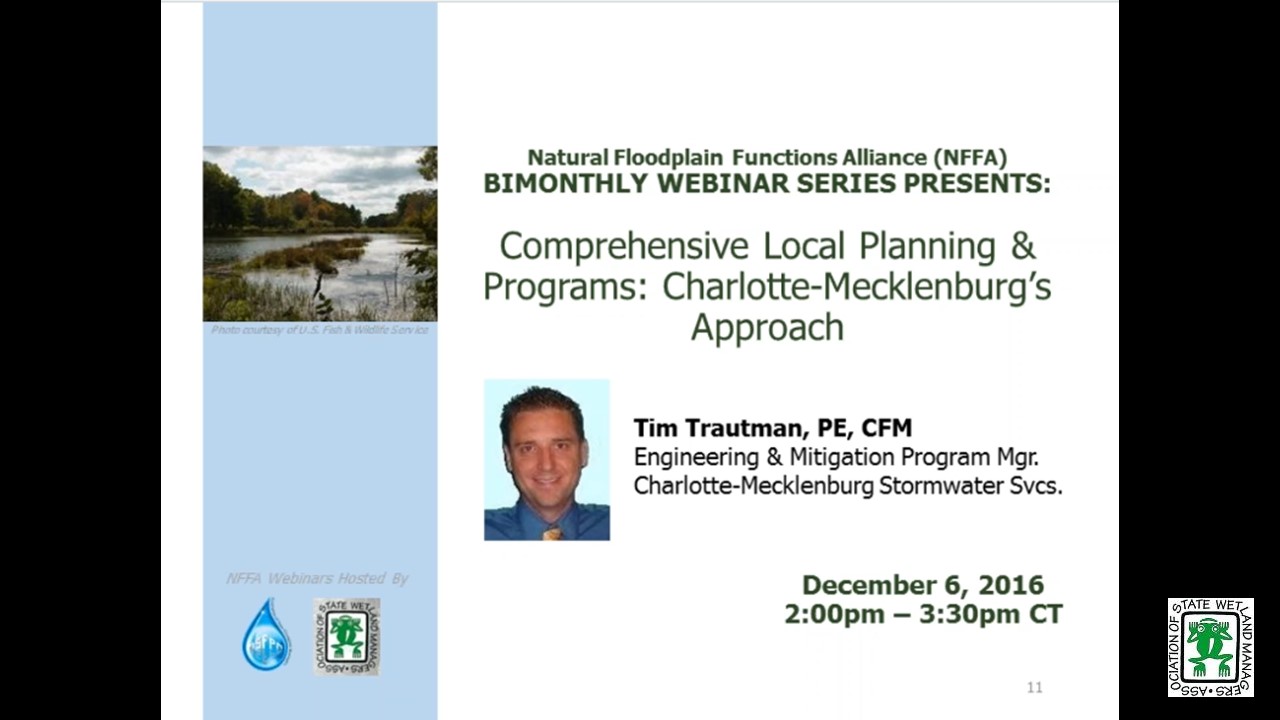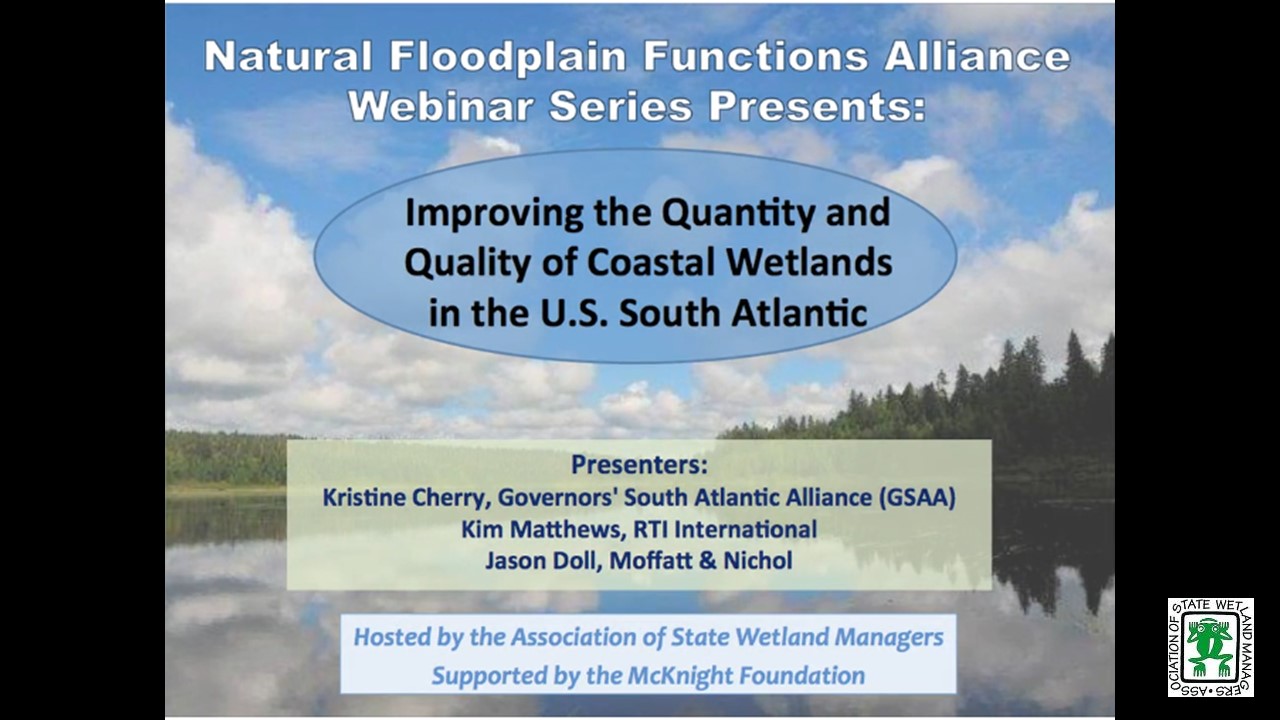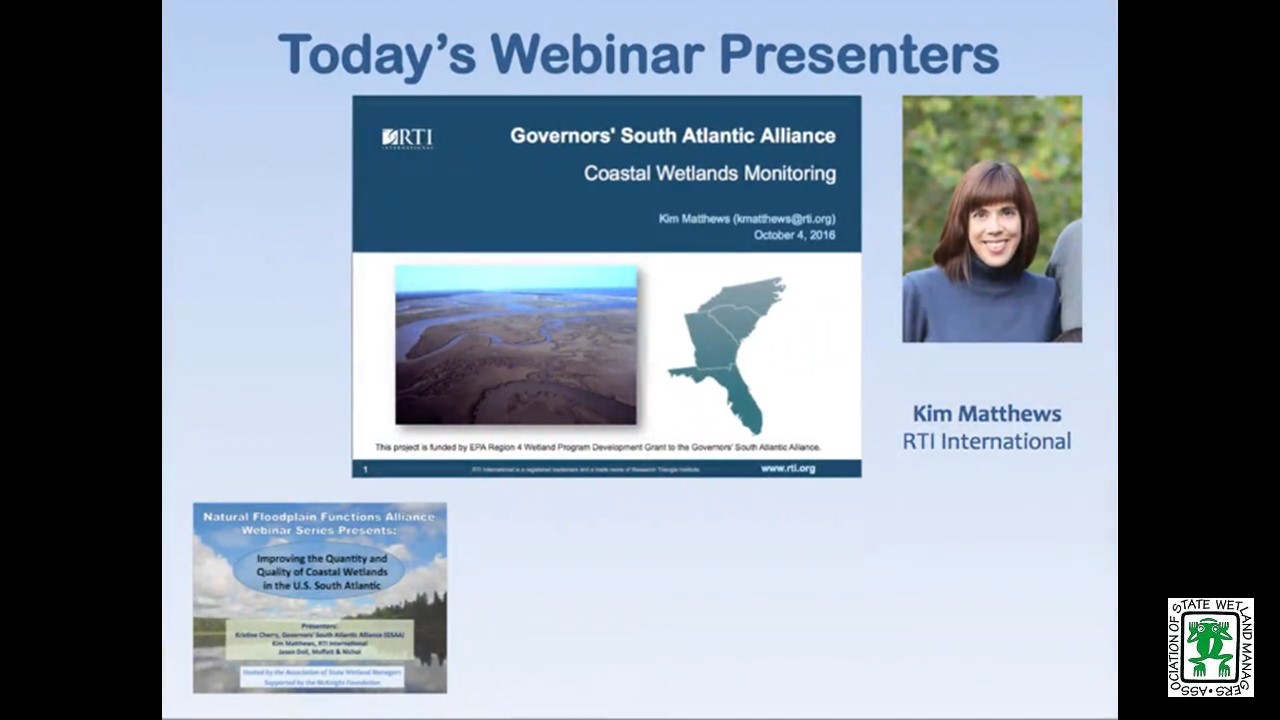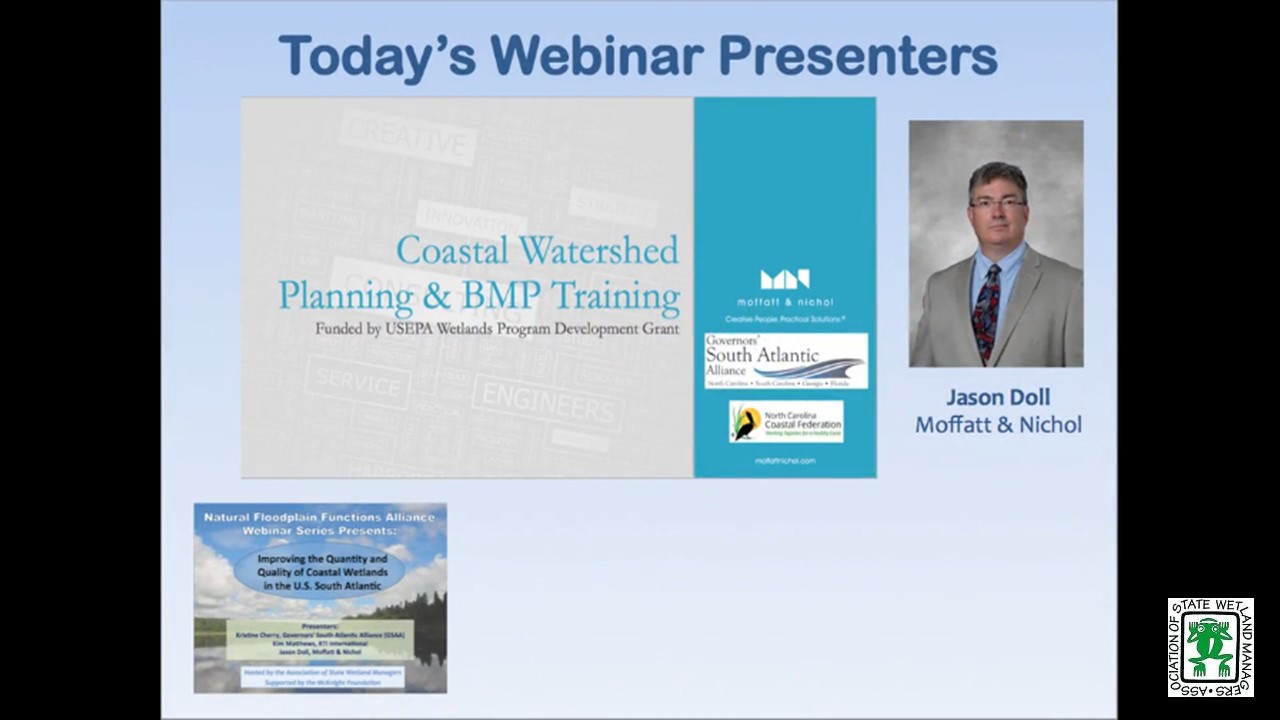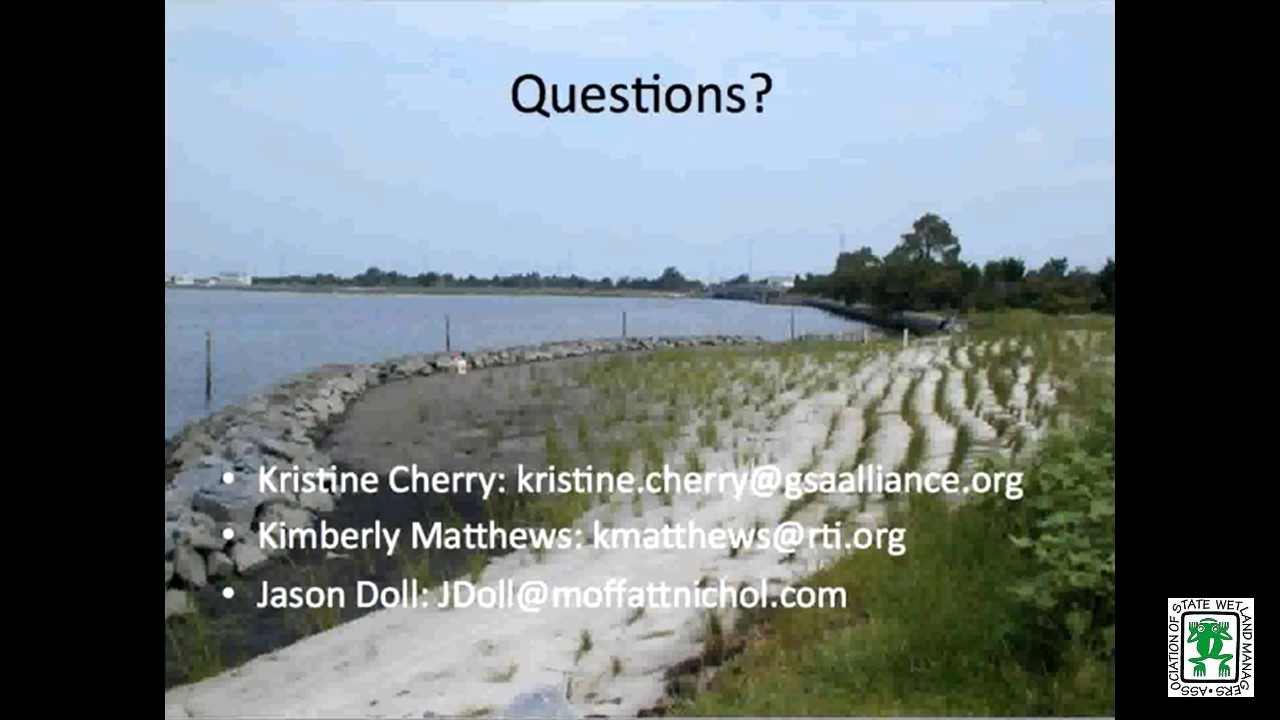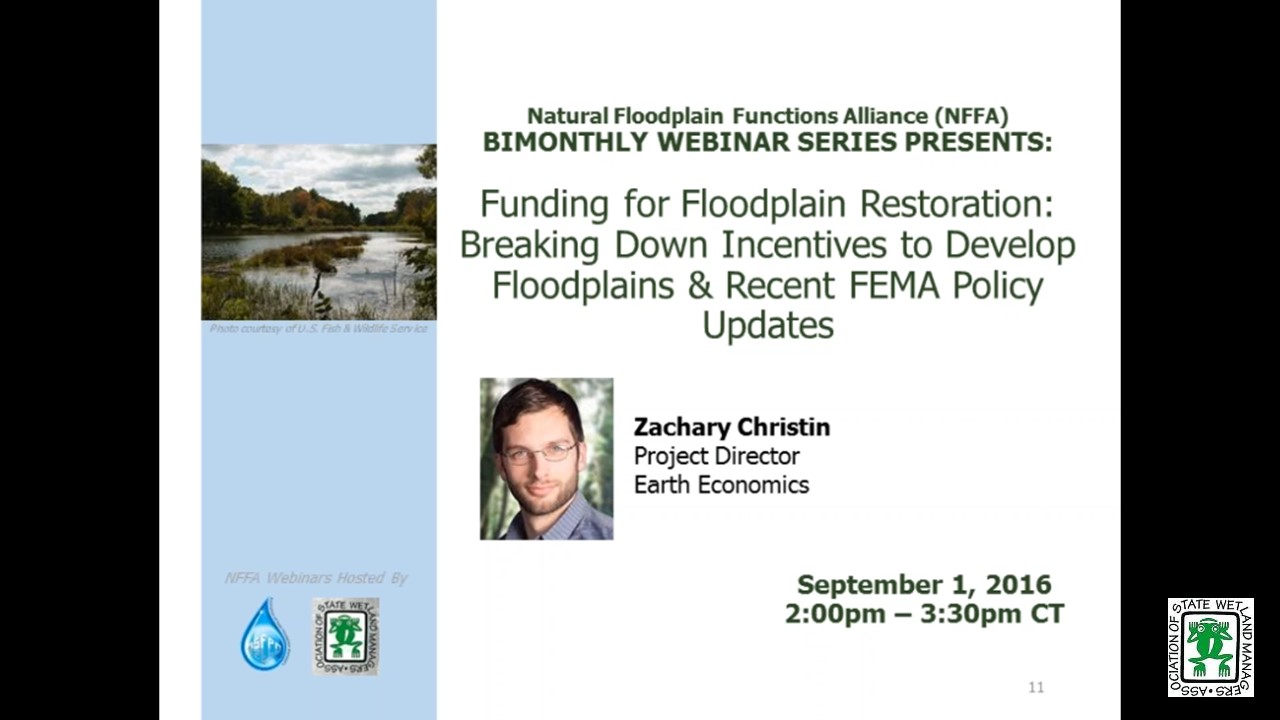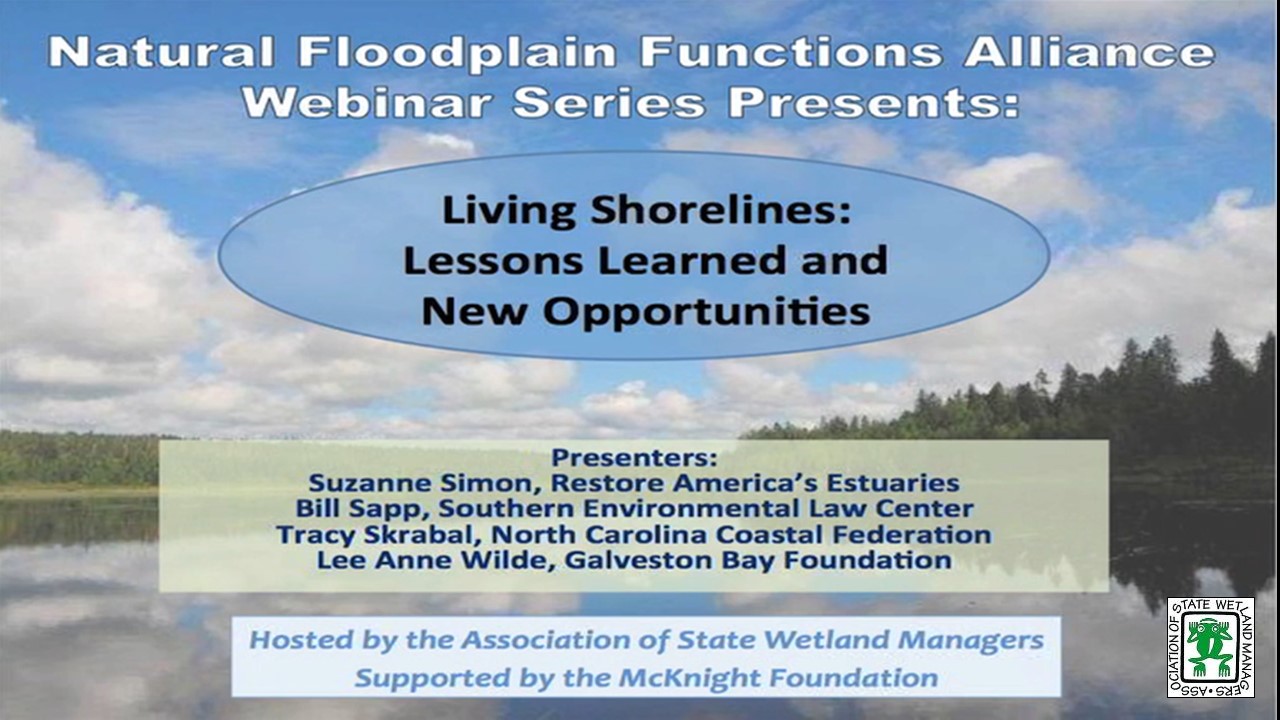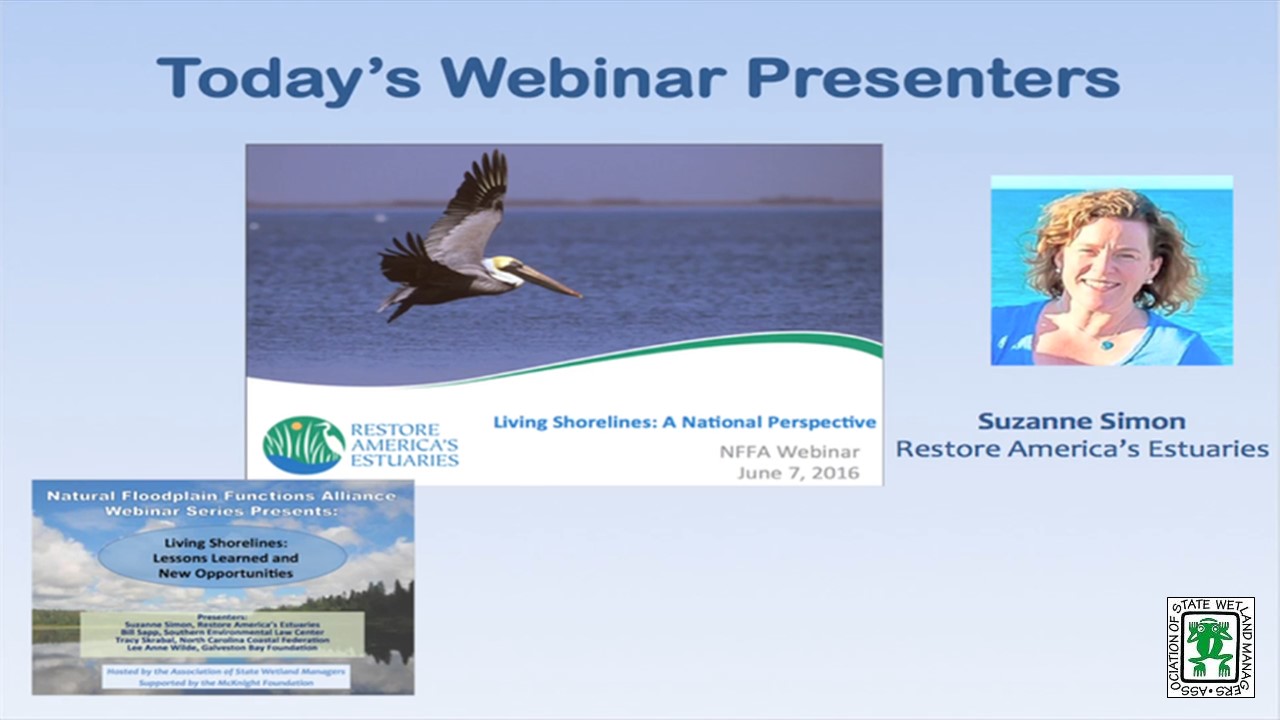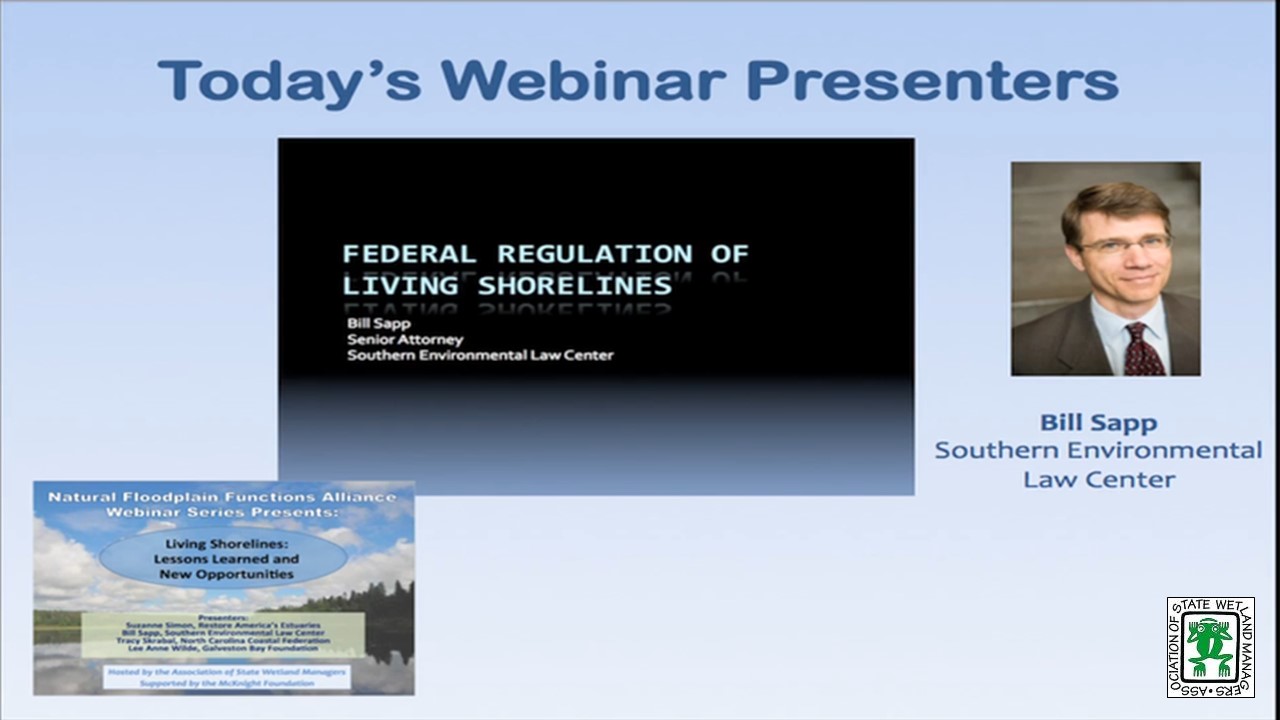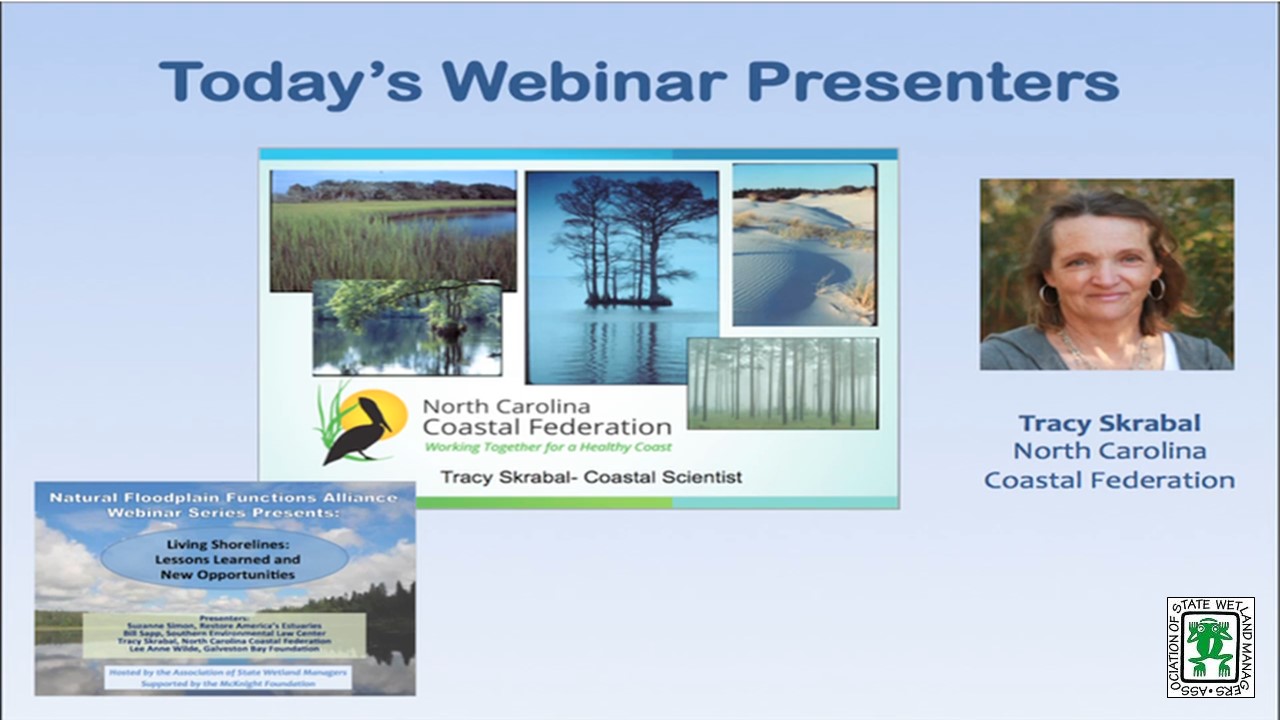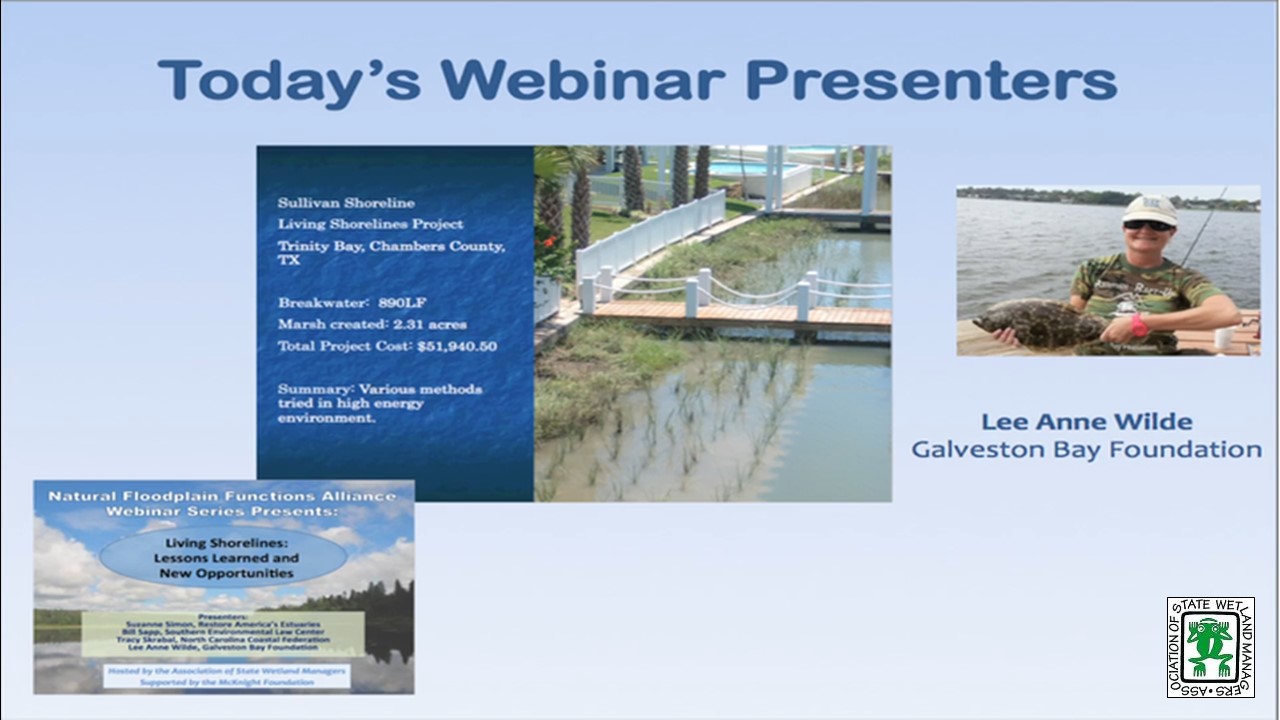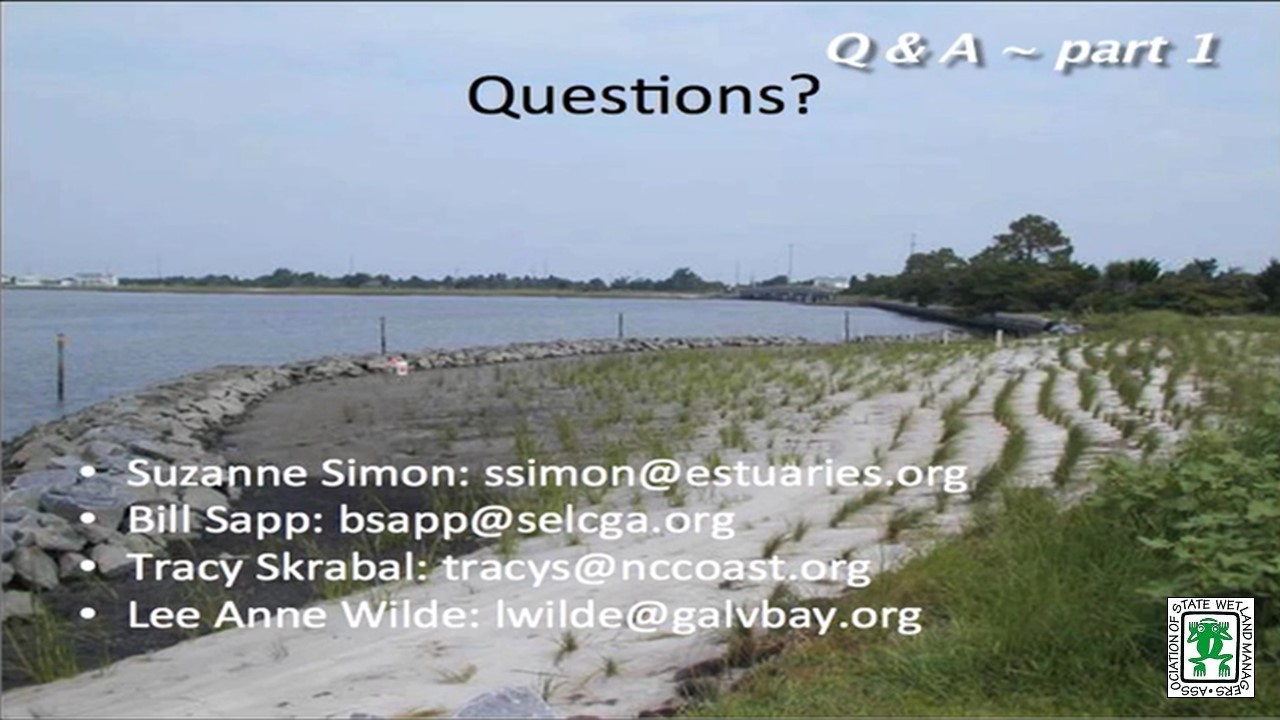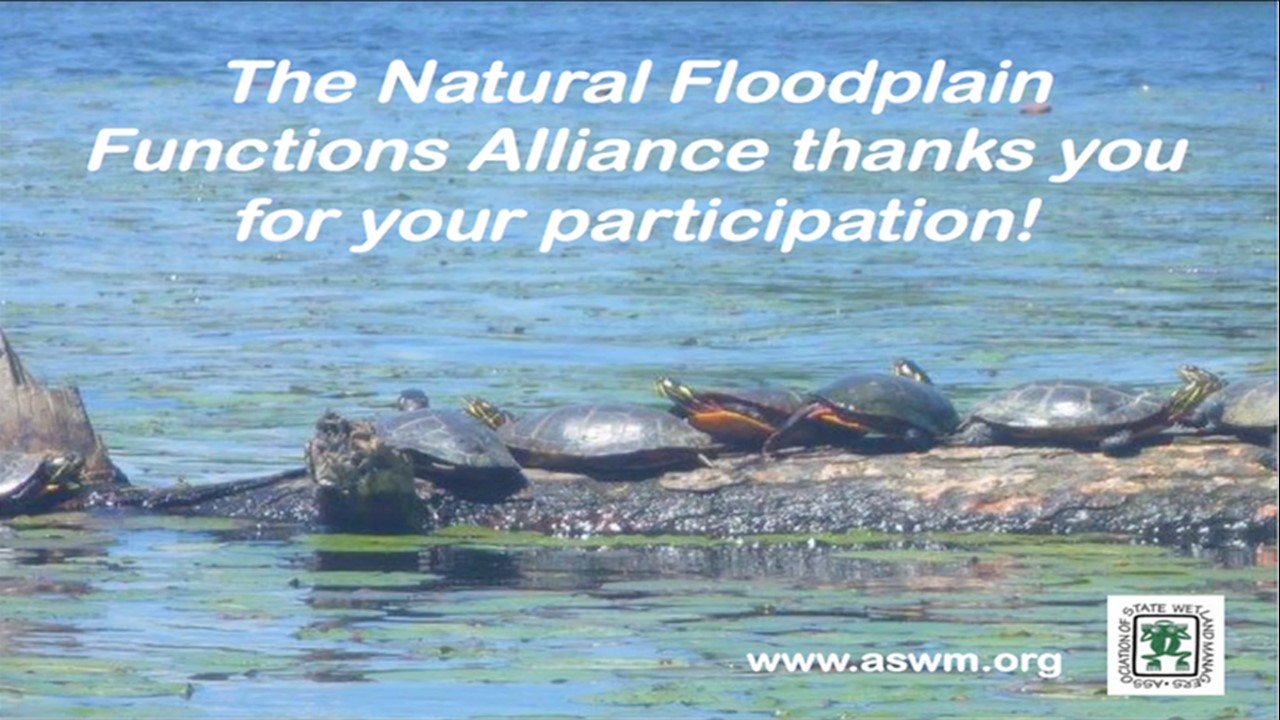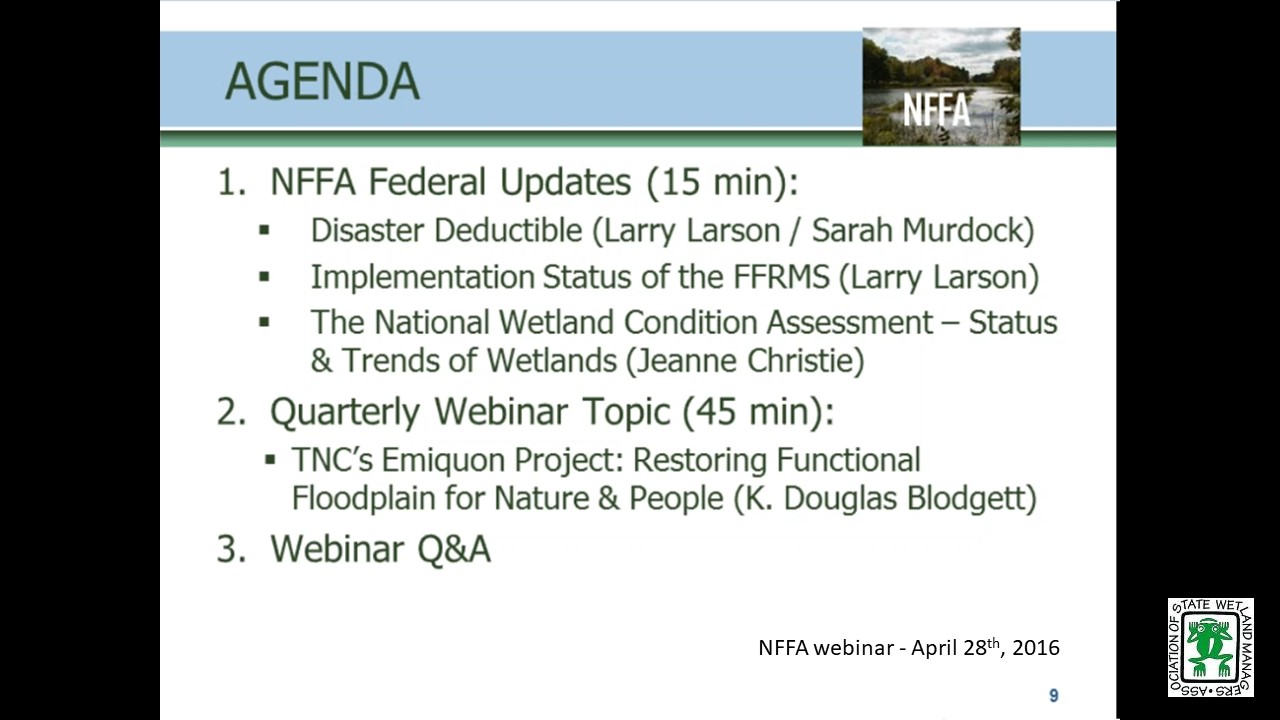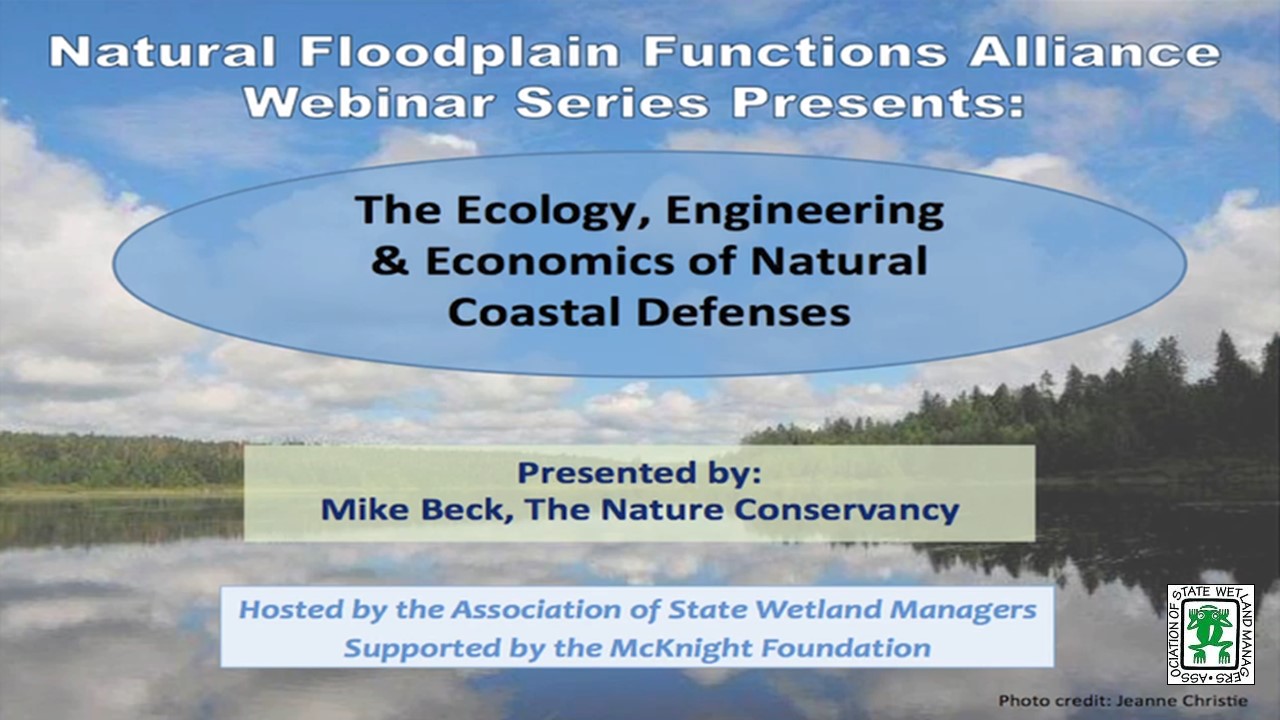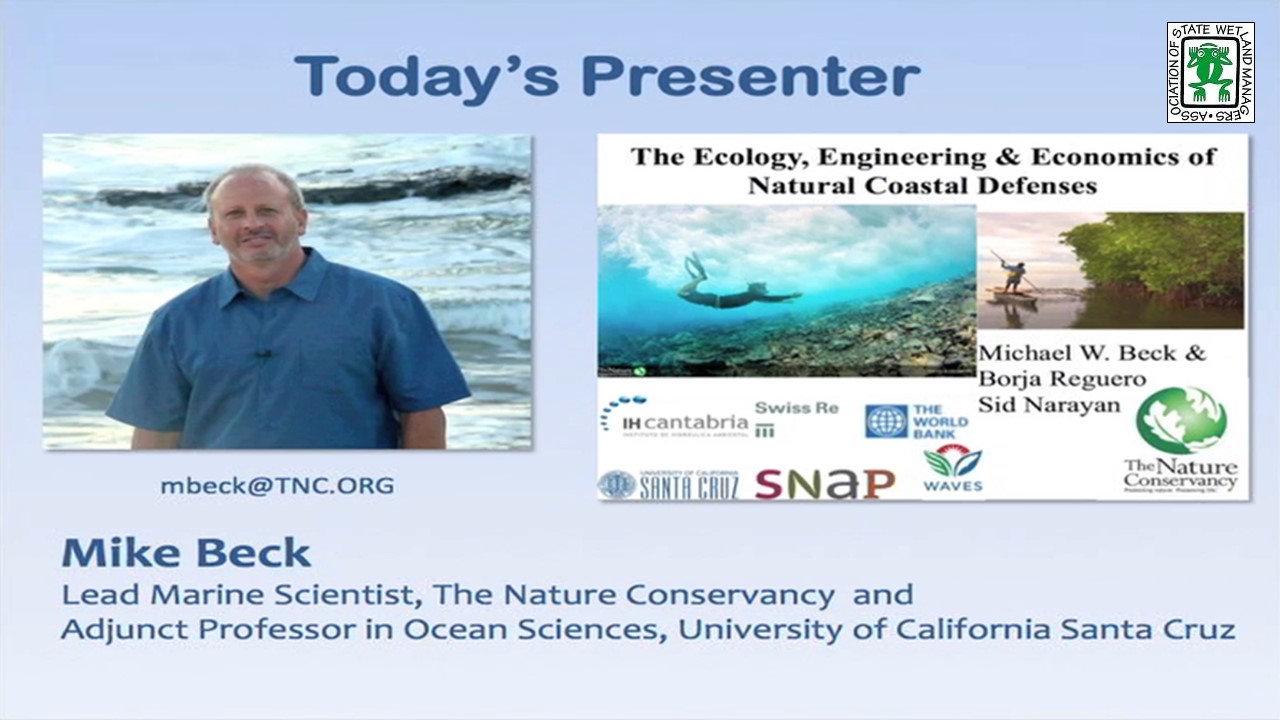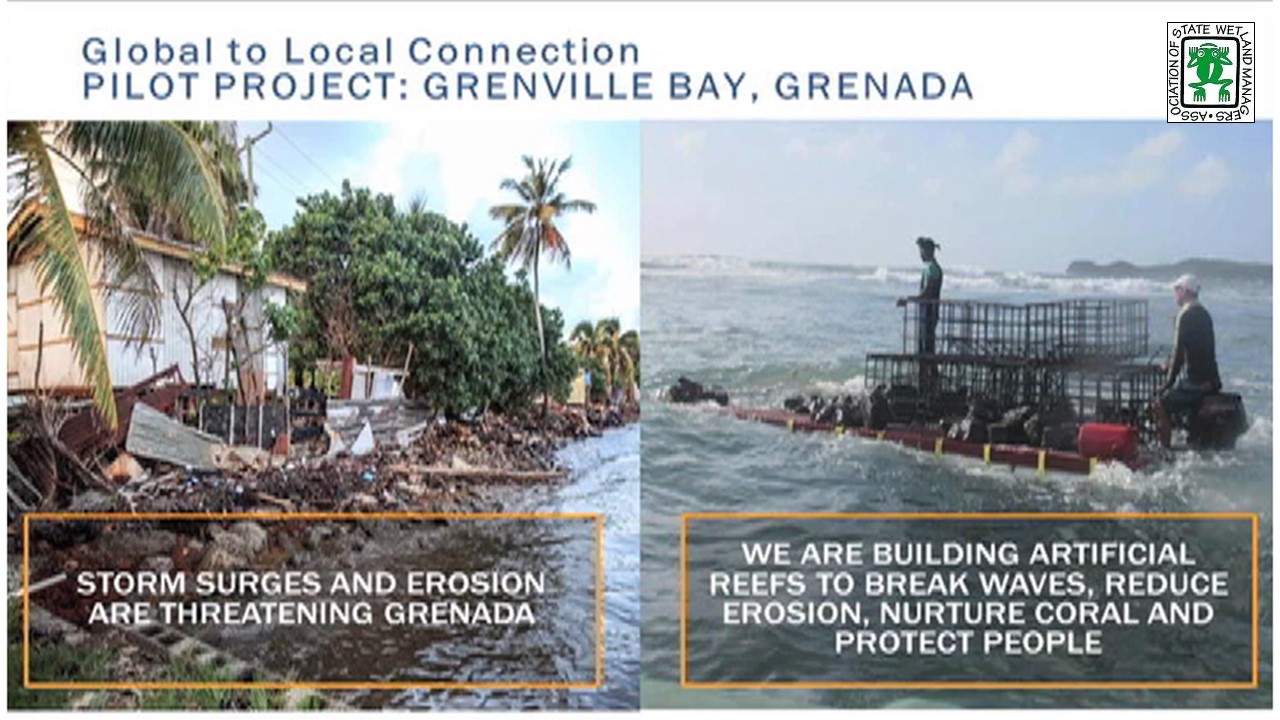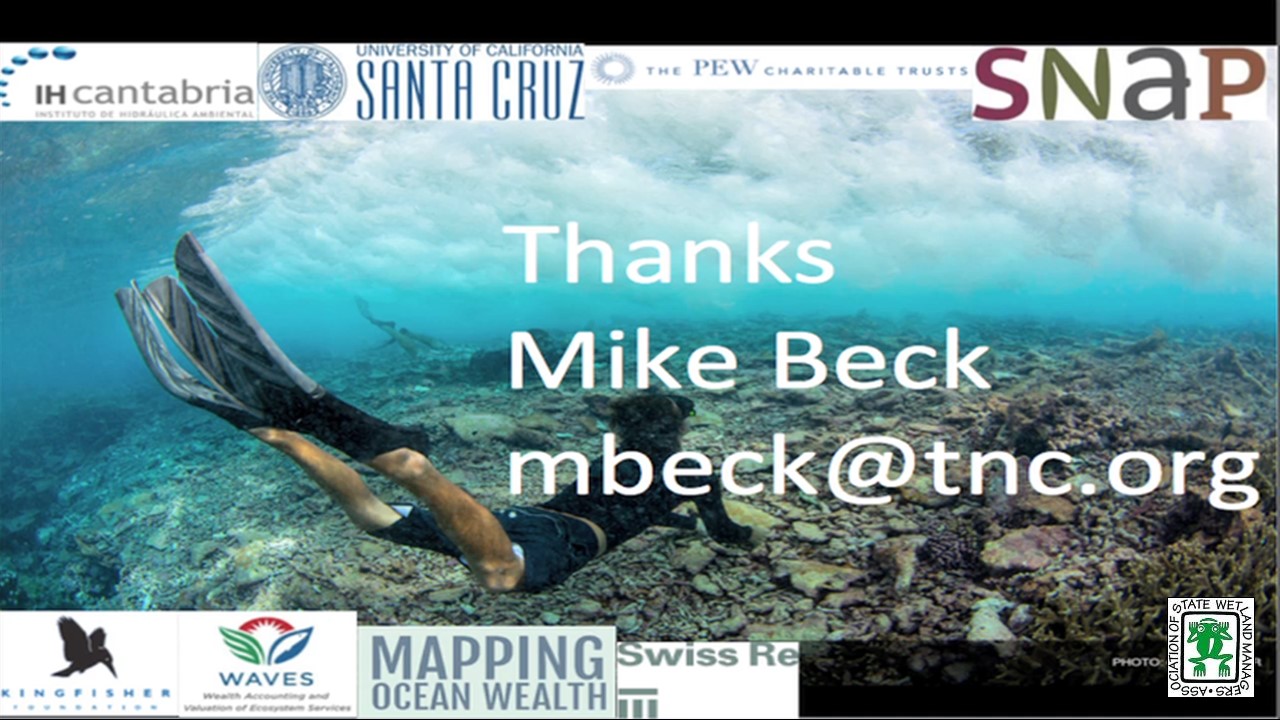Comprehensive Local Planning and Programs: Charlotte-Mecklenburg’s Approach
Tuesday, December 6, 2016 - 3:00 p.m. ET
DESCRIPTION
Comprehensive planning and visioning for floodplains can only be done on the local level. Many communities lack a vision or don’t know where to begin. This webinar will demonstrate how Charlotte-Mecklenburg developed and implemented a local resilience vision, and created plans and programs to implement it over the past 20 years. It takes a whole lot more than just funding to truly become more resilient.
This webinar provided ideas and examples that can be implemented to varying degrees in any community. Some of the topics in this webinar included; community visions for managing flood risk that promote long term resilience, communities acceptable risk level, adapt to flood risk changes, incentivizing and implementing mitigation at the local level, making your mitigation planning more useful, communicating risk that will lead to actions, showing results.
Flood Risk Assessment and Risk Reduction Plan (January 2012)
PRESENTER
- Tim Trautman, PE, CFM, Charlotte-Mecklenburg Storm Water Services, Engineering & Mitigation Program Manager [PRESENTATION PDF]
Please click only once on each video recording to view in this window.
![]()
October Federal Update: The FEMA Proposed Rule for FFRMS and Update on WRDA
Tuesday, October 4, 2016 - 3:00 p.m. EDT
- Larry Larson, Senior Policy Advisor, Association of State Floodplain Managers
Improving the Quantity and Quality of Coastal Wetlands in the U.S. South Atlantic
INTRODUCTION
- Marla Stelk, Policy Analyst, ASWM and Jeanne Christie, ASWM [PRESENTATION PDF]
PRESENTERS
- Kristine Cherry, Governors' South Atlantic Alliance (GSAA) [INTRODUCTION PDF] [PRESENTATION PDF]
- Kim Matthews, RTI International [PRESENTATION PDF]
- Jason Doll, Moffatt & Nichol [PRESENTATION PDF]
ABSTRACT
The USFWS and NOAA report that coastal wetlands in the US are being lost at a rate six times faster than wetlands in the rest of the country. Impacts to coastal wetlands are a challenge for every level of government and governance, and while many regulatory authorities fall within the jurisdiction of national and state government agencies, there are knowledge gaps at the regional level in understanding trends and environmental, physical, and anthropogenic factors that impact wetlands. State, federal, and non-profit partners have come together through the Governors’ South Atlantic Alliance to address the regional-scale needs of coastal wetlands conservation efforts. The webinar will review the objectives and the approaches of three main components of the GSAA coastal wetlands program, and the progress to date from each.
Project #1 Coastal Wetlands Monitoring
Objectives
- Improve coordination of fragmented monitoring programs
- Improve comparability of monitoring programs
- Improve data awareness and information sharing
Project #2 Coastal Watershed Management
Objectives
- Increase local capacity for development of watershed restoration plans
- Facilitate implementation of Coastal Water Quality BMPs
Project #3 Living Shorelines
Objectives
- Develop a network of living shorelines practitioners in the Southeast
- Build awareness of the scope of living shorelines activities in the region
- Identify gaps in knowledge and capacity that, if filled, would expand the appropriate use of living shorelines
Please click only once on each video recording to view in this window.
![]()
Funding for Floodplain Restoration: Breaking Down Incentives to Develop Floodplains & Recent FEMA Policy Updates
September 1, 2016 - 3:00 p.m. ET
HOST
Association of State Floodplain Managers
PRESENTER
- Zachary Christin, Project Director, Earth Economics
ABSTRACT
Last May, FEMA released a memorandum that outlined how the agency is broadening authorization of natural solutions for flood mitigation projects. Under the new policy, FEMA expanded eligibility of pre-mitigation project types for drought and wildfire disasters, which include groundwater recharge and reforestation. The agency is also allowing ecosystem service values to be applied to benefit-cost analysis of these pre-mitigation activities. The takeaway message: FEMA now funds restoration projects that mitigate the effects of disasters.
FEMA’s recent policy update marks their second major milestone as a leader in addressing a future under a changing climate. With programs in nearly $24 billion of debt, FEMA’s change was imminent, and further reform may be necessary. Other federal agencies must follow suit as we continue to experience the development of floodplains that exacerbate flood damages and inhibit ecological functions.
This presentation will begin with a discussion of U.S. regulatory policy related to floodplain management and the disincentives that allow development of floodplains to persist. The discussion will follow with a path moving forward: Highlighting success cases at the federal level and offering solutions to existing policy.
Please click only once on each video recording to view in this window.
![]()
Living Shorelines: Lessons Learned and New Opportunities
June 7, 2016 - 3:00 p.m. ET
INTRODUCTION
- Marla Stelk, Policy Analyst, ASWM and Jeanne Christie, ASWM [PRESENTATION PDF]
PRESENTERS
- Suzanne Simon, Strategic Programs Manager, Restore America’s Estuaries [PRESENTATION PDF]
- Bill Sapp, Senior Attorney, Southern Environmental Law Center [POWERPOINT PRESENTATION]
- Tracy Skrabal, Southeast Regional Manager and Coastal Scientist, North Carolina Coastal Federation [PRESENTATION PDF]
- Lee Anne Wilde, Living Shorelines Program Managers, Galveston Bay Foundation [PRESENTATION PDF]
ABSTRACTS
Suzanne Simon, Restore America’s Estuaries
Whether known as living shorelines, soft stabilization, soft armoring, or green shores, this suite of techniques provides an opportunity for property owners to address shoreline erosion while also providing ecosystem and habitat benefits. Ms. Simon will provide an overview from a national perspective regarding these approaches. She will also highlight findings, tools, opportunities, and resources for people wanting information, either for themselves or property owners.
Bill Sapp, Southern Environmental Law Center
The proposed nationwide permits have finally hit the streets. As predicted there is a NWP 13, as well as a new NWP for living shorelines. I will be discussing the good, the bad, and the ugly in each of these permits. I will also be discussing the importance of commenting on these permits during the 60 day comment window. It is critical that the Corps gets these permits right because we need to head off the growing epidemic of shoreline hardening facing our coasts and rivers.
Tracy Skrabal, North Carolina Coastal Federation
This presentation will provide information and “lessons learned” for living shorelines projects in and around North Carolina. With decades of experience as a backdrop, Ms. Skrabal will discuss challenges and opportunities for living shorelines projects. In addition, the presentation will provide Ms. Skrabal’s perspective and experience in advocating for permitting changes for these efforts.
Lee Anne Wilde, Galveston Bay Foundation
This presentation will use as a case study a living shoreline site on Trinity Bay near Anahuac, TX. Galveston Bay Foundation and the landowner have been working for many years to find ways to control the erosion of his shoreline in ways that enhance habitat and water quality. Several methods have been tried in this high energy environment. This presentation will look at what has worked and what hasn’t discussing lessons learned along the way. In addition, the presentation will address why GBF sought a Nationwide 27 permit for habitat creation as opposed to a Nationwide 13 for bank stabilization in this instance as well as many others.
Please click only once on each video recording to view in this window.
The Nature Conservancy's Emiquon: Restoring Functional Floodplain for Nature & People
April 28, 2016 - 3:00 p.m.-4:30 p.m. ET
HOST
Association of State Floodplain Managers
PRESENTER
- K. Douglas Blodgett, Director of River Conservation, Illinois Chapter of The Nature Conservancy [PRESENTATION PDF]
ABSTRACT
In large-floodplain river systems, such as the Illinois River, the dynamic connection between the river and its floodplain contributes to important ecological processes and habitats that provide a wide variety of ecosystem services and support diversity and abundance. Most of these services were minimized or even lost completely when fertile floodplains were isolated by levees and drained for agriculture nearly a century ago. At The Nature Conservancy’s 6700-acre Emiquon Preserve along the Illinois River, we are working with partners on restoration and management of a formerly leveed, draied, and intensively farmed floodplain to reestablish many of the ecosystem services it formerly provided. Restoration began in 2007 and results to date have been impressive. Over 265 bird species have been documented and peak one-day densities of water birds are approaching 200,000. In 2016, a managed connection between the restored floodplain and the river is being completed to provide water control needed for restoring a more natural hydrology to sustain the high-quality habitats and to facilitate movements of aquatic organisms. Through effectual partnerships with agencies, universities and other NGOs, research and monitoring at Emiquon is advancing our understanding, restoration, and management of floodplains and the many benefits they provide for nature and people.
Please click only once on each video recording to view in this window.
![]()
The Ecology, Engineering & Economics of Natural Coastal Defenses
Tuesday, March 1, 2016 - 3:00 p.m. - 4:30pm ET
INTRODUCTION
- Marla Stelk, Policy Analyst, ASWM and Jeanne Christie, ASWM [PRESENTATION PDF]
PRESENTER
- Mike Beck, The Nature Conservancy and Adjunct Professor in Ocean Sciences, University of California Santa Cruz [PRESENTATION PDF]
ABSTRACT
The risks and the costs associated with coastal hazards are increasing both from coastal development and climate change. Coastal and marine habitats, particularly reefs and wetlands can substantially reduce exposure and vulnerability to coastal hazards, providing natural protection from risk. Yet the value of these systems as natural and nature-based defenses is still not fully recognized, and they continue to be lost and degraded. This webinar session will provide participants with: (a) a synopsis from a new World Bank Guidance Note on the coastal protection role of reefs and mangroves and the recommended approaches for valuing these benefits; (b) results from a global analysis that uses the recommended approaches to quantify the costs of flooding from coral reef loss; and (c) Results from cost:benefit analyses with TNC and Swiss Re that quantitatively compare natural and artificial defenses across the entire the Gulf of Mexico.
Please click only once on each video recording to view in this window.
View Past Natural Floodplain Functions Alliance Webinars
PDF List of Past Natural Floodplain Functions Alliance Webinar Recordings

